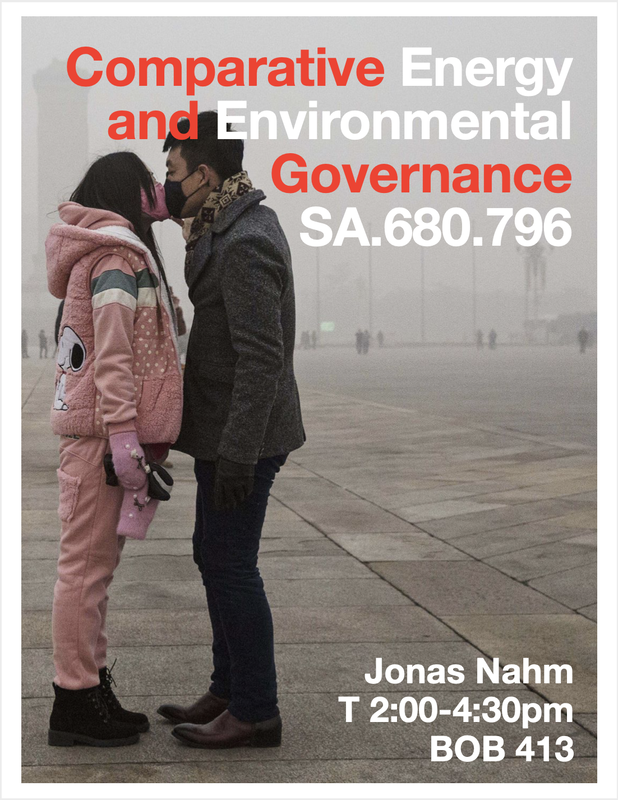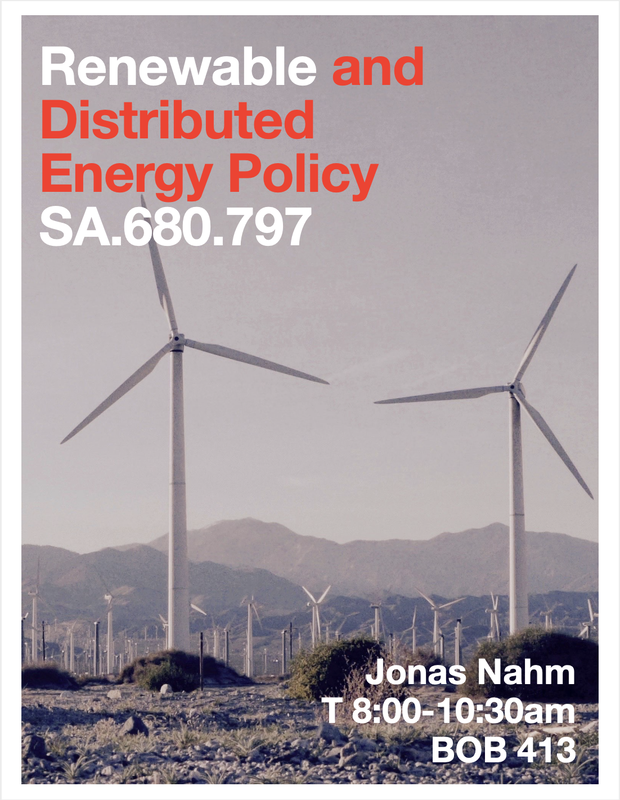|
|
Comparative Energy and Environmental Governance (SA.680.796)
Despite an overwhelming scientific consensus on the causes and consequences of climate change, the nature and substance of policy responses to reduce greenhouse gas emissions have varied significantly, both at the national and subnational level. What drives some nation states to embrace renewable energy and decrease reliance on fossil fuels while others show little willingness to decarbonize the economy? Why are some cities investing in sustainable public transit systems, while others offer few public alternatives to the car? What are the conditions under which regional collaboration on climate policy can emerge? Moving beyond the idea that differences in public opinion are primarily to blame for variation in policy responses to climate change, this course focuses instead on how the design of the state itself influences energy and environmental governance outcomes. A range of state institutions—including regime type, electoral systems, party rules, fiscal systems, and institutions that determine regional and municipal policy-making authority—affect public policy-design and implementation. To further complicate matters, effective responses to climate change frequently span regional and national borders, mapping poorly onto existing governance institutions and spawning a range of unintended consequences. This course applies theories and concepts from literatures on comparative politics to systematically examine the link between state institutions and energy and environmental governance. In doing so, the course moves gradually from multilateral institutions, through institutions at the national, regional, and municipal levels. The course ends with a class on non-state, market-based institutions for energy and environmental governance. Although the material covered in course is applicable to energy and environmental governance in broad terms, each week draws on cases of climate policy-making in China, Germany, and the United States. Renewable and Distributed Energy Policy (SA.680.797) Given the challenges presented by climate change, environmental degradation, and resource scarcity, virtually everybody agrees that “business as usual” in energy production and consumption is no longer tenable. However, for all the compelling reasons to increase the share of energy generated from renewable sources, the development of renewable energy sectors has varied widely across countries. In some economies, more than 30 percent of electricity are now generated from renewable sources, while others have made few attempts to establish domestic renewable energy sectors. This course examines what's driving remarkable renewable energy growth in some countries while others lag behind. To understand such variation, this course provides an in-depth look at the policies and economics of renewable energy – from large scale wind and solar to distributed generation (DG) resources such as rooftop solar, micro-grids, and storage in the U.S., Europe, and Asia. Weekly, discussion-intensive class meetings examine how specific national and state policies are driving growth in renewable energy sectors, how these policies impact renewable energy projects (large and small scale), how and why these policies have differed across nations and over time, and what factors have contributed to policy failure. |
JONAS NAHM
Jonas Nahm | Assistant Professor of Energy, Resources, and Environment | Johns Hopkins SAIS
1619 Massachusetts Avenue NW, Washington, DC | jnahm @ jhu.edu
1619 Massachusetts Avenue NW, Washington, DC | jnahm @ jhu.edu

